Composition: Hand dyed wool and cotton
Size: 61 x 91.5 cm (24 x 36 inches)
Features:
- Hand embroidered/chain-stitched
- All natural fibres – embroidered wool on cotton canvas
- Fair Trade certified
- Limited edition – individually numbered
- Certificate of Authenticity supplied with each kilim
- Royalties paid to the artist/family on every sale
- Hard wearing
- Back has non-slip surface
- Each kilim has flap on the rear for ease of hanging with dowel/rod
- Matching cushion covers are also available
Chain-stitched kilims are a traditional rug making technique from Kashmir. As people sat on the floor they were both homewares and decoration. As many artworks are painted on the ground or 3D surfaces/bodies most of the images do not have a set orientation so can also be hung portrait or landscape if preferred.
Artist: Stephen Jupurrula Nelson of Warlukurlangu Artists, Yuendumu NT
Title: Janganpa Jukurrpa (Possum Ancestral Creation Story)
About the design:
Janganpa (common brush-tail possum [Trichosurus vulpecula] Jukurrpa (Dreaming/Creation Story) travels all over Warlpiri country. Janganpa are nocturnal animals that often nest in the hollows of white gum trees (wapunungka). This story comes from a big hill called Mawurrji, west of Yuendumu and north of Pikilyi (Vaughan Springs). A group of janganpa ancestors resided there. Every night they would go out in search of food. Their hunting trips took them to Wirlki and Wanapirdi, where they found pamapardu (flying ants). They journeyed on to Ngarlkirdipini looking for water. A Nampijinpa women was living at Mawurrji with her two daughters. She gave her daughters in marriage to a Jupurrurla janganpa but later decided to run away with them. The Jupurrurla angrily pursued the woman. He tracked them to Mawurrji where he killed them with a stone axe. Their bodies are now rocks at this place. Warlpiri people perform a young mens initiation ceremony, which involves the Janganpa Jukurrpa. The Janganpa Jukurrpa belongs to Jakamarra/Jupurrurla men and Nakamarra/Napurrurla women. In Warlpiri paintings traditional iconography is used to represent this Jukurrpa. Janganpa tracks are often represented as E shaped figures and concentric circles are used to depict the trees in which the janganpa live, and also the sites at Mawurrji.
Stephen is a member of Warlukurlangu Artists of Yuendumu, Central Australia.
CARE INSTRUCTIONS:
Do not put place/use in direct sunlight or colors may fade. Dry cleaning recommended. Can be ironed gently on the front of the rug using a steam wool setting or a steamer.
About the Better World Arts chainstitch kilim products
These beautiful, unique textiles are a cross-cultural collaboration combining Aboriginal designs and traditional Kashmiri rug-making techniques. Chain stitched, using hand dyed wool, each is a completely handmade piece. A more empowering way to work, this brings many direct benefits to the artists’ and their community. Control and ownership of intellectual property are also maintained. Purchase of these products guarantees a direct return to the Aboriginal artist and their community.


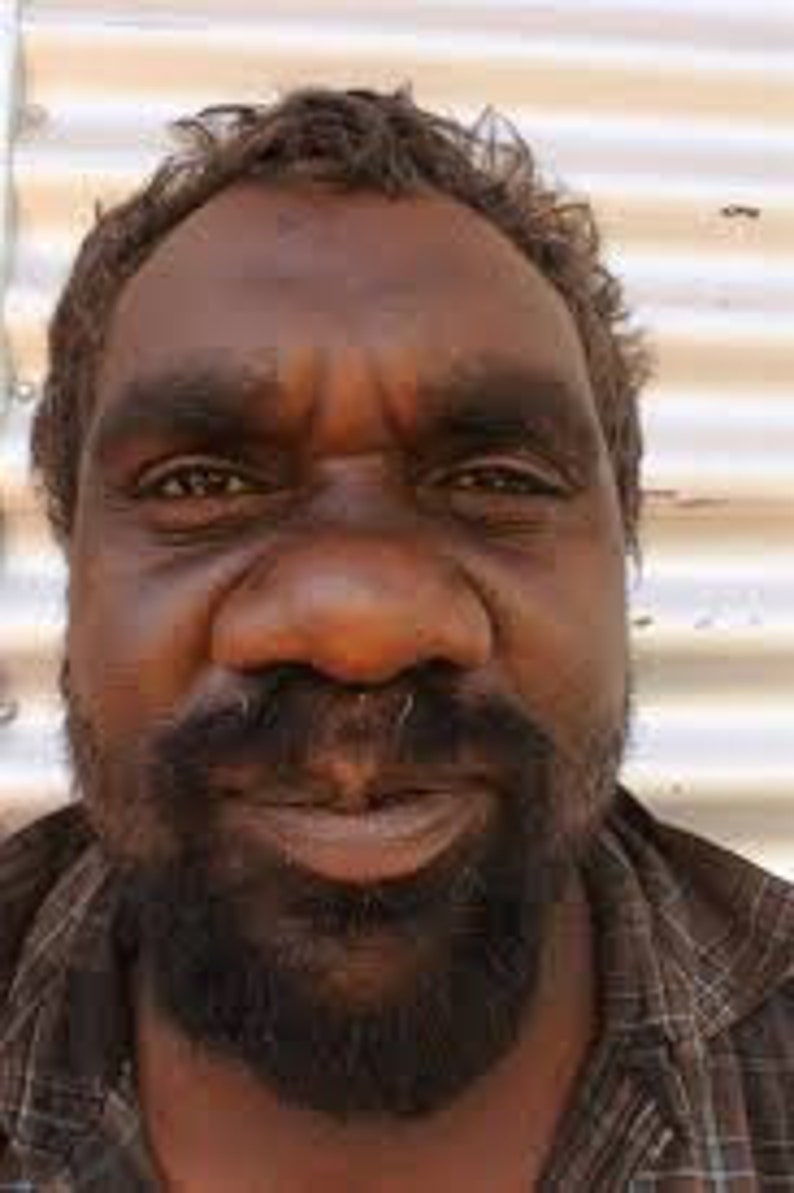
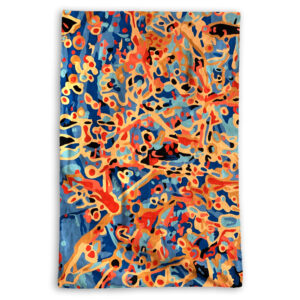


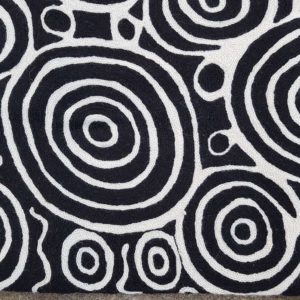
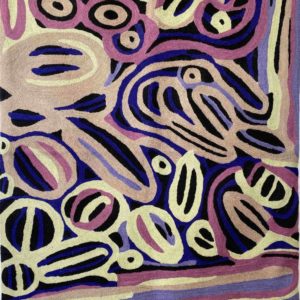
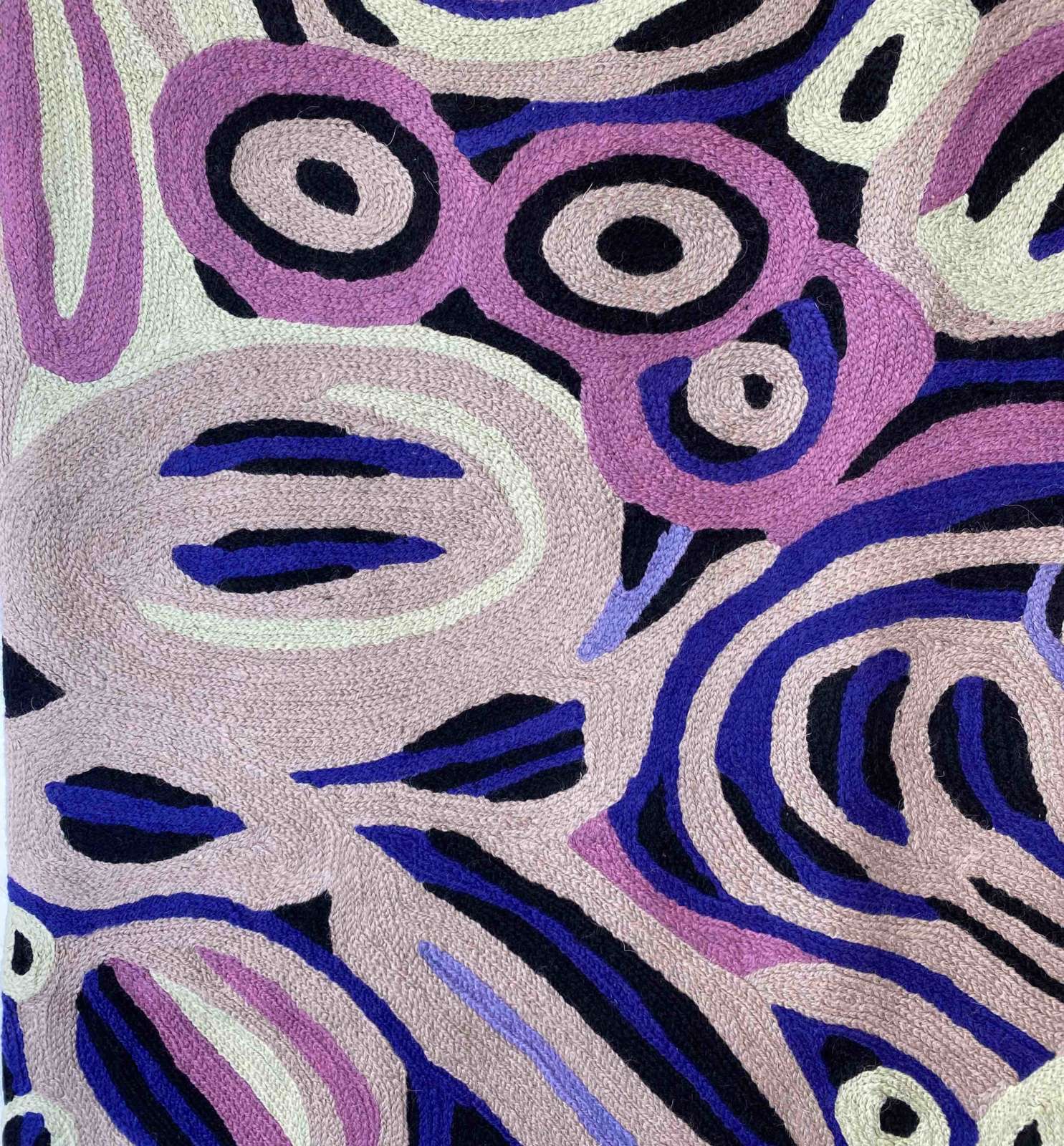
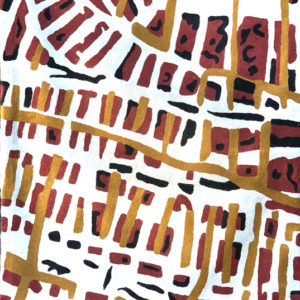
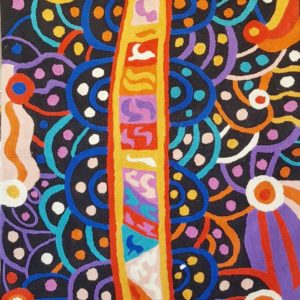
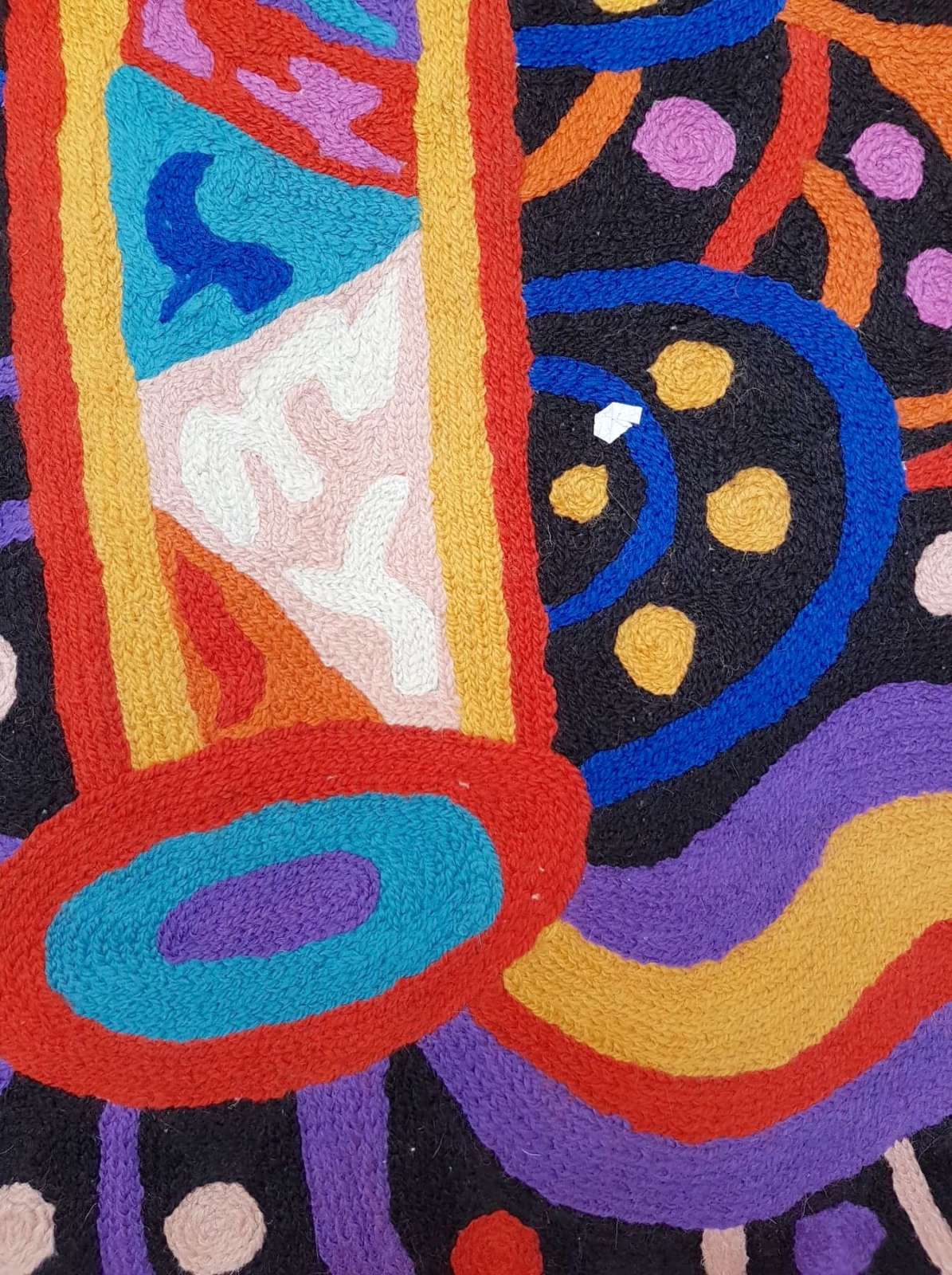
Reviews
There are no reviews yet.